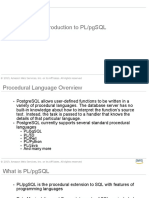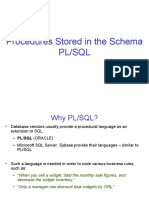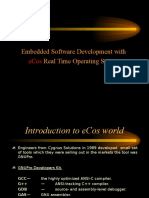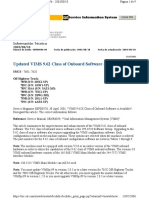0% found this document useful (0 votes)
12 views34 pagesLecture 13
This document covers various topics in Database Management Systems, including Full Outer Joins, PL/SQL programming, and the structure of procedures and functions. It provides examples of SQL syntax for joins, creating procedures, and using loops and conditions in PL/SQL. Additionally, it discusses data manipulation techniques such as UNION, INTERSECT, and EXCEPT operations.
Uploaded by
bsse23018Copyright
© © All Rights Reserved
We take content rights seriously. If you suspect this is your content, claim it here.
Available Formats
Download as PDF, TXT or read online on Scribd
0% found this document useful (0 votes)
12 views34 pagesLecture 13
This document covers various topics in Database Management Systems, including Full Outer Joins, PL/SQL programming, and the structure of procedures and functions. It provides examples of SQL syntax for joins, creating procedures, and using loops and conditions in PL/SQL. Additionally, it discusses data manipulation techniques such as UNION, INTERSECT, and EXCEPT operations.
Uploaded by
bsse23018Copyright
© © All Rights Reserved
We take content rights seriously. If you suspect this is your content, claim it here.
Available Formats
Download as PDF, TXT or read online on Scribd
/ 34





























































































